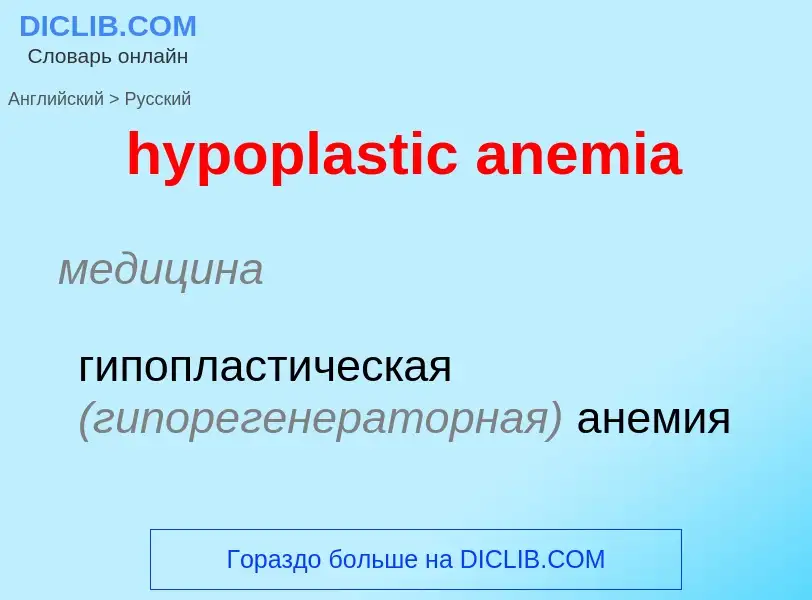ترجمة وتحليل الكلمات عن طريق الذكاء الاصطناعي ChatGPT
في هذه الصفحة يمكنك الحصول على تحليل مفصل لكلمة أو عبارة باستخدام أفضل تقنيات الذكاء الاصطناعي المتوفرة اليوم:
- كيف يتم استخدام الكلمة في اللغة
- تردد الكلمة
- ما إذا كانت الكلمة تستخدم في كثير من الأحيان في اللغة المنطوقة أو المكتوبة
- خيارات الترجمة إلى الروسية أو الإسبانية، على التوالي
- أمثلة على استخدام الكلمة (عدة عبارات مع الترجمة)
- أصل الكلمة
hypoplastic anemia - ترجمة إلى الروسية
медицина
гипопластическая (гипорегенераторная) анемия
медицина
наследственная гипопластическая анемия Блекфана-Даймонда
медицина
конституциональная анемия
تعريف
ويكيبيديا

Iron-deficiency anemia is anemia caused by a lack of iron. Anemia is defined as a decrease in the number of red blood cells or the amount of hemoglobin in the blood. When onset is slow, symptoms are often vague such as feeling tired, weak, short of breath, or having decreased ability to exercise. Anemia that comes on quickly often has more severe symptoms, including confusion, feeling like one is going to pass out or increased thirst. Anemia is typically significant before a person becomes noticeably pale. Children with iron deficiency anemia may have problems with growth and development. There may be additional symptoms depending on the underlying cause.
Iron-deficiency anemia is caused by blood loss, insufficient dietary intake, or poor absorption of iron from food. Sources of blood loss can include heavy periods, childbirth, uterine fibroids, stomach ulcers, colon cancer, and urinary tract bleeding. Poor absorption of iron from food may occur as a result of an intestinal disorder such as inflammatory bowel disease or celiac disease, or surgery such as a gastric bypass. In the developing world, parasitic worms, malaria, and HIV/AIDS increase the risk of iron deficiency anemia. Diagnosis is confirmed by blood tests.
Iron deficiency anemia can be prevented by eating a diet containing sufficient amounts of iron or by iron supplementation. Foods high in iron include meat, nuts, spinach, and foods made with iron-fortified flour. Treatment may include dietary changes and dealing with underlying causes, for example medical treatment for parasites or surgery for ulcers. Iron supplements and vitamin C may be recommended. Severe cases may be treated with blood transfusions or iron injections.
Iron-deficiency anemia affected about 1.48 billion people in 2015. A lack of dietary iron is estimated to cause approximately half of all anemia cases globally. Women and young children are most commonly affected. In 2015, anemia due to iron deficiency resulted in about 54,000 deaths – down from 213,000 deaths in 1990.






